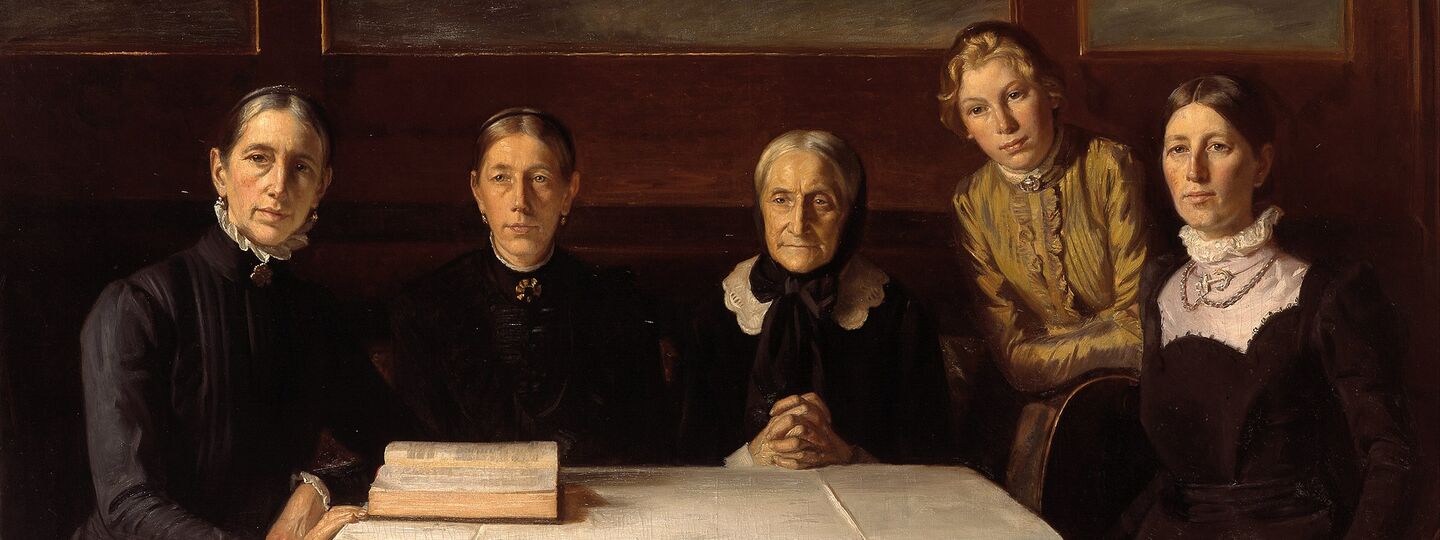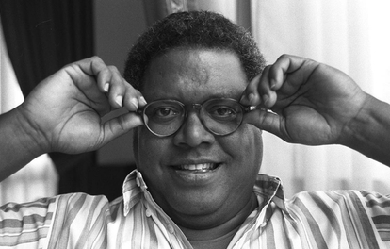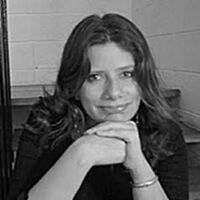
Nora Méndez es una poetisa nacida en El Salvador en el año 1969. Si bien se trata de una escritora joven, su nombre ciertamente no ha pasado desapercibido hasta el momento; sus obras han aparecido en más de una antología editada en varios países, entre los que se cuentan Estados Unidos y Alemania. En este último, una profesora universitaria lleva años encargándose de la traducción de las poesías de Méndez al alemán. Cabe mencionar que ha participado en numerosos festivales poéticos, tanto en su país como en otros puntos de Latinoamérica y Europa. Además, ha sido reconocida como una de las veintisiete figuras más importantes de la lírica salvadoreña en un libro editado en España. Fuera de la escritura, Nora tiene otros intereses artísticos; en la década de los 80 se dedicó a componer canciones para una agrupación llamada Nuevamérica, además de ocupar el puesto de vocalista. Desde el año 2002, Nora ha publicado diversos poemarios, entre los que se encuentran "Atravesarte a pie toda la vida", "La estación de los pájaros" y "Calentura de amor". En más de una ocasión, sus poemas han recibido excelentes críticas y su fuerza como escritora acarrea una gran responsabilidad en una época en la que se valora tan poco la literatura. Nora Méndez (El Salvador, 1969) es una escritora salvadoreña. Graduada en Sociología y Comunicaciones también ha incursionado en la música como intérprete y compositora. Su incursión en el mundo de las letras y la música, tuvo que ver a la vez con su participación política durante la guerra civil salvadoreña (1980-1992). Fue Secretaria General de la Federación de Estudiantes de Secundaria (FES) y participó en los comandos urbanos de las FAL (Fuerzas Armadas de Liberación), brazo armado del Partido Comunista de El Salvador (PCS). Fue capturada por la Policía Secreta de la Policía Nacional en 1989 y puesta a la orden de los juzgados y llevada al Penal de Ilopango ese mismo año. Luego de la firma de los Acuerdos de Paz de 1992, se retiró de la vida pública, reapareciendo en 2002 con su primer libro editado. Durante los años 1980 fue intérprete y compositora del grupo musical "Nuevamérica", participando en conciertos en Centroamérica. En la actualidad ha escrito y dirigido una cantata para el grupo coral-musical "Caterva". Entre los años de 1991 y 1992, diseñó y publicó la página Guanacanto, del Grupo ASTAC, en Diario CoLatino, bajo el seudónimo de Pajarillo Verde, y fue parte del equipo editorial "Sombrero Azul". En el año 2008, compuso la canción “Rufina llora por sus hijos”, con música y arreglos del maestro Carlos Colón, en conmemoración de la única sobreviviente de la masacre del Mozote, acontecida durante la guerra civil salvadoreña. En 2010 realizó los videos de arte "Reciclando el Balam" con música del compositor Manuel Carcache. Entre 2009 y 2012, algunos de sus poemas han aparecido en Giroscopio, una plaquette de poesía experimental editada en Badajoz, España, por el artista Roberto Farona. Ha dirigido y realizado performances colectivas en las calles de San Salvador, tales como Poesía en la calle, 2004, una intervención de dos horas en el tráfico de San Salvador. Repartiendo libros y recitando poesía junto a otros vates en buses, calles y gasolineras con fondo de música clásica en altoparlantes; El Parque de Zapatos, 2010, una instalación colectiva y espontánea de 200 pares de zapatos viejos en la Plaza Cívica del Centro Histórico de San Salvador, para recordar a los muertos de la masacre del entierro de Monseñor Oscar Arnulfo Romero, asesinado en 1980 por escuadrones de la muerte. Asimismo en 2014 organizó y dirigió la performance urbana "El color de la sangre jamás se olvida" en torno al símbolo de la sangre del pueblo como elemento determinante para la construcción del ideario salvadoreño y su instrumentalización por parte de los grupos de poder. Méndez trabaja arduamente en reflexiones sobre memoria, verdad y transformación de los sistemas sociales. Dentro de sus intereses se encuentran la experimentación y el uso de la tecnología, por ello fue de las primeras poetas en utilizar recursos multimedia para sus presentaciones, tales como video, música y fotografía. Ha prologado un par de libros de poesía a nivel latinoamericano.

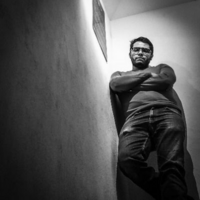
Nativo de la ciudad de Querétaro, México; aprendíz de caminante, amante de la plática, de la lluvia, adicto a leer y a la naturaleza; curioso por la poesía desde joven. Treinta ciclos del sol han pasado, sigo aprendiendo a vivir. Bienvenidas sean las amistades creadas con letras, los reflejos de libertades literarias a través de las carencias y virtudes; del poema dentro del alma, que busca ser libre.
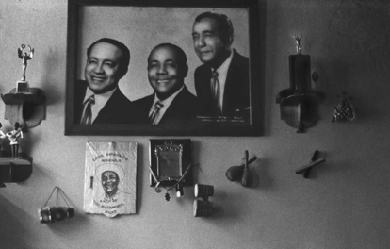
Miguel Matamoros fue un músico y compositor cubano, nacido en Santiago de Cuba el 8 de mayo de 1894, muerto el 5 de Abril de 1971. Tuvo una gran contribución al desarrollo del son cubano, ritmo procedente de las zonas rurales del oriente de Cuba. En 1925, funda en Santiago de Cuba, con Siro Rodríguez y Rafael Cueto, la legendaria agrupación Trío Matamoros y realizan su primera grabación en disco en 1928. Promesa, Dulce embeleso, Elíxir de la vida, El trío y el ciclón, La mujer de Antonio y Mamá son de la loma son algunos de los temas creados por el trío.
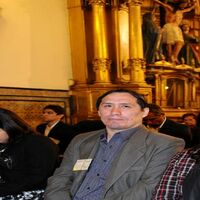
Hola amigos soy Mardam de Lima Perú, COACH MOTIVACIONAL Y ASESOR EDUCATIVO. Soy autodidacta hace 15 años en temas de la mente humana, filosofía y metafísica. Egresado de la Universidad Villarreal en Lima Perú en la carrera de Ingeniería geográfica y ambiental, especialidad de ecología. Mucho de mi conocimiento de los temas mencionados estan plasmados en algunos textos que he publicado por internet y otros que aun no he publicado pero que he ido desarrolando en mi blog http://www.mentefilosofica.com/ desde el 2007. Soy editor de las siguientes páginas: http://www.exitoydesarrollopersonal.com/ http://www.purotip.com/ http://www.prosperidadespiritual.com/ Me especializo en escribir ensayos, poemas y tips sobre autoayuda y motivación perosnal. Mi conocimiento autodidacta está referido a lectura de cientos de libros de filosofía, psicología, la mente humana, autoyuda y de la cultura oriental. Además asistencia a decenas de seminarios y talleres afines a los temas mencionados, el trabajo en un consultorio esotérico y experiencias personales. A lo largo de estos últimos años he recibido cientos de mails de personas con problemas a muchas de las cuales se les ha respondido siempre de buena fe y con la confianza de que algunas ideas les hayan servido para encontrar algunas respuestas a sus problemas. De hecho en estos años he recibido también muchos mails de agradecimiento, lo que me ha generado una gran satisfacción. Las respuestas a los usuarios por mail gratuitamente siempre estarán, con gusto porque estamos para servir y siempre que haya tiempo trataré de responder a todos los que pueda. En blogs, redes sociales encontrarán mis escritos. https://www.facebook.com/ElEnfoqueCorrecto https://www.facebook.com/Mardam66 https://plus.google.com/u/0/b/100381621942688976802/100381621942688976802/posts Pronto estaré publicando mi primer libro de autosuperaciín titulado EL ENFOQUE CORRECTO GRACIAS
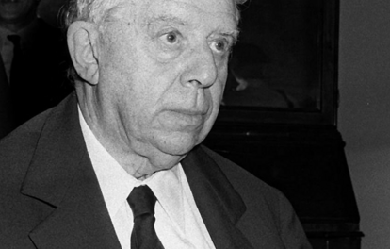
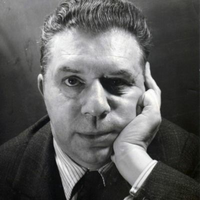
Eugenio Montale (Genova, 12 ottobre 1896 – Milano, 12 settembre 1981) è stato un poeta e scrittore italiano, premio Nobel per la letteratura nel 1975. Biografia Anni giovanili Eugenio Montale nacque a Genova, in un palazzo dell’attuale corso Dogali, nella zona soprastante Principe, il 12 ottobre 1896, ultimo dei cinque figli di Domenico Montale e Giuseppina Ricci, esponenti della media borghesia genovese. Il padre era comproprietario di una ditta di prodotti chimici, la società G. G. Montale & C., tra l’altro fornitrice di Veneziani S.p.A., azienda presso cui era impiegato Italo Svevo. Crescita Inizia gli studi all’istituto “Vittorino Da Feltre” di Via Maragliano gestito dai Barnabiti (rettore è padre Rodolfo Trabattoni, vice rettore padre Giovanni Semeria). Il 21 maggio riceve la cresima. Sebbene per lui vengano preferiti, a causa della sua salute precaria, i più brevi studi tecnici in luogo di quelli classici e venga dunque iscritto nel 1915 all’istituto tecnico commerciale “Vittorio Emanuele”, dove si diplomerà in ragioneria, il giovane Montale ha la possibilità di coltivare i propri interessi prevalentemente letterari, frequentando le biblioteche cittadine e assistendo alle lezioni private di filosofia della sorella Marianna, iscritta a Lettere e Filosofia. La sua formazione è dunque quella tipica dell’autodidatta, che scopre interessi e vocazione attraverso un percorso libero da condizionamenti. Letteratura (Dante, Petrarca, Boccaccio e D’Annunzio su tutti, autori che lo stesso Montale affermerà di avere “attraversato”) e lingue straniere sono il terreno in cui getta le prime radici, la sua formazione e il suo immaginario, assieme al panorama, ancora intatto, della Riviera ligure di Levante: Monterosso al Mare e le Cinque Terre, dove la famiglia trascorre le vacanze. «Scabri ed essenziali», come egli definì la sua stessa terra, gli anni della giovinezza delimitano in Montale una visione del mondo in cui prevalgono i sentimenti privati e l’osservazione profonda e minuziosa delle poche cose che lo circondano – la natura mediterranea e le donne della famiglia. Ma quel “piccolo mondo” è sorretto intellettualmente da una vena linguistica nutrita di queste lunghe letture, finalizzate soprattutto al piacere della conoscenza e della scoperta. In questo periodo di formazione Montale coltiva inoltre la passione per il canto, studiando dal 1915 al 1923 con l’ex baritono Ernesto Sivori, esperienza che lascia in lui un vivo interesse per la musica, anche se non si esibirà mai in pubblico. Riceverà comunque già nel 1942 dediche da Tommaso Landolfi, fondatore con altri della rivista Letteratura. Grande Guerra e avvento del Fascismo Nell’anno 1917, dopo quattro visite mediche, è dichiarato idoneo al servizio militare, a settembre è arruolato nel 23º fanteria a Novara, frequenta a Parma il corso allievi ufficiali di complemento ottenendo il grado di sottotenente di fanteria e chiede di essere inviato al fronte. Dall’aprile 1917 combatte in Vallarsa, inquadrato nei “Leoni di Liguria” del 158º Reggimento fanteria ed il 3 novembre 1918 conclude l’esperienza combattente entrando a Rovereto. In seguito fu trasferito a Chienes, poi al campo di reduci di guerra dell’Eremo di Lanzo e, infine, fu congedato con il grado di tenente all’inizio del 1920. Negli anni tra il 1919 e il 1923 conosce a Monterosso Anna degli Uberti (1904-1959), protagonista femminile in un insieme di poesie montaliane, trasversali nelle varie opere, note come “ciclo di Arletta” (chiamata anche Annetta o capinera). Nel 1924 conosce la giovane di origine peruviana Paola “Edda” Nicoli, anch’ella presente negli Ossi di seppia e ne Le occasioni. È il momento dell’affermazione del fascismo, dal quale Montale prende subito le distanze sottoscrivendo nel 1925 il Manifesto degli intellettuali antifascisti di Benedetto Croce. Il suo antifascismo ha una dimensione non tanto politica quanto culturale: esso si nutre di un disagio esistenziale e di un sentimento di malessere nei confronti della civiltà moderna tout court. È un antifascismo aristocratico e snobistico. Montale vive questo periodo nella “reclusione” della provincia ligure, che gli ispira una visione profondamente negativa della vita. Il suo pessimismo non essendo immediatamente riconducibile alla politica sopravvive anche dopo l’avvento della democrazia: è evidente ne La bufera e altro nel suo non riconoscersi nei due partiti di massa (DC e PCI) e nella società dei consumi. Soggiorno a Firenze Montale giunge a Firenze nel 1927 per il lavoro di redattore ottenuto presso l’editore Bemporad. Nel capoluogo toscano gli anni precedenti erano stati decisivi per la nascita della poesia italiana moderna, soprattutto grazie alle aperture della cultura fiorentina nei confronti di tutto ciò che accadeva in Europa: le Edizioni de La Voce; i Canti Orfici di Dino Campana (1914); le prime liriche di Ungaretti per Lacerba; e l’accoglienza di poeti come Vincenzo Cardarelli e Umberto Saba. Montale, dopo l’edizione degli Ossi del 1925, nel 1929 è chiamato a dirigere il Gabinetto scientifico letterario G. P. Vieusseux. Curiosamente, come ricordava lo stesso Montale, fu inserito in una lista di possibili candidati da Paolo Emilio Pavolini e venne scelto dall’allora podestà fiorentino Giuseppe Della Gherardesca, essendo l’unico non iscritto al Partito Fascista. Dieci anni più tardi, per l’identico motivo, Montale venne esonerato dall’incarico, dopo che per 18 mesi gli era stato sospeso lo stipendio, nel tentativo di “incoraggiarlo” ad iscriversi al PNF.In quegli anni collabora alla rivista Solaria, frequenta i ritrovi letterari del caffè Le Giubbe Rosse conoscendovi Carlo Emilio Gadda, Tommaso Landolfi e Elio Vittorini, e scrive per quasi tutte le nuove riviste letterarie che nascono e muoiono in quegli anni di ricerca poetica. In questo contesto prova anche l’arte pittorica imparando dal Maestro Elio Romano l’impasto dei colori e l’uso dei pennelli. Nel '29 è ospite nella casa di Drusilla Tanzi (che aveva conosciuto nel '27) e del marito, lo storico d’arte Matteo Marangoni, casa dove due anni prima gli avevano presentato anche Gerti Frankl. La vita a Firenze però si trascina per il poeta tra incertezze economiche e complicati rapporti sentimentali; nel 1933 conosce l’italianista americana Irma Brandeis, con cui avvia una quinquennale storia d’amore, cantandola con il nome di Clizia in molte poesie confluite ne Le occasioni. Legge molto Dante e Svevo, e i classici americani. Fino al 1948, l’anno del trasferimento a Milano, egli pubblica Le occasioni e le prime liriche di quelle che formeranno La bufera e altro (che uscirà nel 1956). Montale, che non si era iscritto al Partito fascista e dopo il delitto di Giacomo Matteotti era stato firmatario del manifesto crociano, prova subito dopo la guerra ad iscriversi al Partito d’azione, ma ne esce pochissimo tempo dopo. Soggiorno a Milano Montale trascorre l’ultima parte della sua vita (dal 1948 alla morte) a Milano. Diventa redattore del Corriere della Sera e critico musicale per il “Corriere d’informazione”. Scrive inoltre reportage culturali da vari Paesi (fra cui il Medio Oriente, visitato in occasione del pellegrinaggio di Papa Paolo VI in Terra Santa). Scrive altresì di letteratura anglo-americana per la terza pagina, avvalendosi anche della collaborazione dell’amico americano Henry Furst, il quale gli invia molti articoli su autori e argomenti da lui stesso richiesti. La vicenda venne rivelata da Mario Soldati nel racconto “Due amici” (Montale e Furst) nel volume Rami secchi (Rizzoli 1989) e soprattutto da Marcello Staglieno, con la pubblicazione su una terza pagina de il Giornale diretto da Indro Montanelli di alcune delle lettere inedite di Montale all’amico. Nel 1956, oltre a La bufera esce anche la raccolta di prose Farfalla di Dinard. Amava anche collaborare con vari artisti ed è il caso ad esempio di Renzo Sommaruga, scultore e artista figurativo, di cui nel 1957 scrisse la presentazione della sua personale parigina e che si può trovare nel Secondo Mestiere. Il 23 luglio 1962 sposa Drusilla Tanzi, con cui conviveva dal 1939, di dieci anni più anziana di lui, con rito religioso a Montereggi, presso Fiesole; il rito civile viene celebrato a Firenze il 30 aprile 1963 (Matteo Marangoni, primo marito di lei, era morto nel 1958), la quale morirà tuttavia a Milano il 20 ottobre dello stesso anno all’età di 77 anni. La salute di Drusilla si era rapidamente deteriorata, per la frattura di un femore in seguito a una caduta accidentale nell’agosto di quell’anno. Nel 1969 viene pubblicata un’antologia dei reportage di Montale, intitolata Fuori di casa, in richiamo al tema del viaggio. Il mondo di Montale, tuttavia, risiede in particolare nella “trasognata solitudine”, come la definisce Angelo Marchese, del suo appartamento milanese di via Bigli, dove viene amorevolmente assistito, alla morte di Drusilla, da Gina Tiossi. Ultimi anni Le ultime raccolte di versi, Xenia (1966, dedicata alla moglie Drusilla Tanzi, morta nel 1963), Satura (1971) e Diario del '71 e del '72 (1973), testimoniano in modo definitivo il distacco del poeta – ironico e mai amaro – dalla Vita con la maiuscola: «pensai presto, e ancora penso, che l’arte sia la forma di vita di chi veramente non vive: un compenso o un surrogato» (Montale, Intenzioni. Intervista immaginaria, Milano 1976). Sempre nel 1966 Montale pubblicò i saggi Auto da fé, una lucida riflessione sulle trasformazioni culturali in corso. Anche se poeta trasognato e “dimesso”, è anche stato oggetto di riconoscimenti ufficiali: lauree honoris causa (Università di Milano nel 1961, Università di Cambridge 1967, La Sapienza 1974). Fu nominato senatore a vita il 13 giugno 1967 dal presidente della Repubblica Giuseppe Saragat per i meriti in campo letterario, aderendo al gruppo del PLI e poi a quello del PRI.Nel pieno del dibattito civile sulla necessità dell’impegno politico degli intellettuali, Montale continuò ad essere un poeta molto letto in Italia. Nel 1975 ricevette il Premio Nobel per la letteratura «per la sua poetica distinta che, con grande sensibilità artistica, ha interpretato i valori umani sotto il simbolo di una visione della vita priva di illusioni».. Nel 1976 scrisse il commiato funebre al suo collega defunto, il salernitano Alfonso Gatto. L’anno seguente gli fu chiesto se, una volta sorteggiato, avrebbe accettato di fare il giurato in un processo contro le Brigate Rosse: “Credo di no”, rispose l’anziano poeta, "sono un uomo come gli altri e non si può chiedere a nessuno di fare l’eroe".Eugenio Montale morì a Milano la sera del 12 settembre 1981, un mese prima di compiere 85 anni, nella clinica San Pio X dove si trovava ricoverato per problemi derivati da una vasculopatia cerebrale. I funerali di Stato furono celebrati due giorni dopo nel Duomo di Milano dall’allora arcivescovo della diocesi Carlo Maria Martini. Venne sepolto nel cimitero accanto alla chiesa di San Felice a Ema, sobborgo nella periferia sud di Firenze, accanto alla moglie Drusilla. Nella seduta del successivo 8 ottobre, il Senato commemorò la figura di Montale, attraverso i discorsi del presidente Amintore Fanfani e del presidente del Consiglio Giovanni Spadolini. Le opere * Le raccolte di versi contengono la storia della sua poesia: * Ossi di seppia, Torino, Gobetti, 1925. * La casa dei doganieri e altri versi, Firenze, Vallecchi, 1932. * Poesie, Firenze, Parenti, 1938. * Le occasioni, Torino, Einaudi, 1939. * Finisterre. Versi del 1940-42, Lugano, Collana di Lugano, 1943. * Quaderno di traduzioni, Milano, Edizioni della Meridiana, 1948. * La bufera e altro, Venezia, Neri Pozza, 1956. * Farfalla di Dinard, Venezia, Neri Pozza, 1956. * Xenia. 1964-1966, San Severino Marche, Bellabarba, 1966. * Auto da fé. Cronache in due tempi, Milano, Il Saggiatore, 1966. Fuori di casa, Milano-Napoli, Ricciardi, 1969; Collana SIS, Mondadori, 1973; Oscar Moderni, Mondadori, 2017. [40 prose di viaggi apparse originariamente sul Corriere della Sera e sul Corriere d’Informazione fra il 1946 e il 1964] * Satura. 1962-1970, Milano, A. Mondadori, 1971. * Nel nostro tempo, Milano, Rizzoli, 1972. * Diario del '71 e del '72, Milano, A. Mondadori, 1973. * Sulla poesia, Milano, A. Mondadori, 1976. * Quaderno di quattro anni, Milano, A. Mondadori, 1977. * Altri versi e poesie disperse, Milano, A. Mondadori, 1981. * Diario postumo. Prima parte: 30 poesie, Milano, A. Mondadori, 1991. ISBN 88-04-34169-6. * Diario postumo. 66 poesie e altre, Milano, A. Mondadori, 1996. ISBN 88-04-41032-9. [sul testo, pubblicato postumo, alcuni studiosi hanno manifestato il dubbio di non autenticità Ossi di Seppia Il primo momento della poesia di Montale rappresenta l’affermazione del motivo lirico. Montale, in Ossi di seppia (1925) edito da Piero Gobetti, afferma l’impossibilità di dare una risposta all’esistenza: in una delle liriche, Non chiederci la parola, egli afferma che è possibile dire solo "ciò che non siamo, ciò che non vogliamo", sottolineando la negatività della condizione esistenziale. Lo stesso titolo dell’opera designa l’esistenza umana, logorata dalla natura, e ormai ridotta ad un oggetto inanimato, privo di vita. Gli ossi di seppia sono una metafora che serve a descrivere l’uomo, che con l’età adulta viene allontanato dalla felicità della giovinezza e abbandonato, al dolore, sulla terra come un inutile osso di seppia. Gli ossi di seppia sono, infatti, gli endoscheletri delle seppie rilasciati sulla spiaggia dalle onde del mare, quindi, presenze inaridite e ridotte al minimo, che simboleggiano la poetica di Montale scabra ed essenziale. In tal modo Montale capovolge l’atteggiamento fondamentale più consueto della poesia: il poeta non può trovare e dare risposte o certezze; sul destino dell’uomo incombe quella che il poeta, nella lirica Spesso il male di vivere ho incontrato, definisce “Divina Indifferenza”, ciò che mostra una partecipazione emotiva del tutto distaccata rispetto all’uomo. In un certo senso, si potrebbe affermare che tale “Divina indifferenza” è l’esatto contrario della “Provvidenza divina” manzoniana. La prima raccolta di Montale uscì nel giugno del 1925 e comprende poesie scritte tra il 1916 e il 1925. Il libro si presenta diviso in quattro sezioni, a loro volta organizzate al loro interno: Movimenti, Ossi di seppia, Mediterraneo, Meriggi ed ombre; a questi fanno da cornice una introduzione (In limine) e una conclusione (Riviere). Il titolo della raccolta vuole evocare i relitti che il mare abbandona sulla spiaggia, come gli ossi di seppia che le onde portano a riva; qualcosa di simile sono le sue poesie: in un’epoca che non permette più ai poeti di lanciare messaggi, di fornire un’interpretazione compiuta della vita e dell’uomo, le poesie sono frammenti di un discorso che resta sottinteso e approdano alla riva del mare come per caso, frutto di momentanee illuminazioni. Le poesie di questa raccolta traggono lo spunto iniziale da una situazione, da un episodio della vita del poeta, da un paesaggio, come quello della Liguria, per esprimere temi più generali: la rottura tra individuo e mondo, la difficoltà di conciliare la vita con il bisogno di verità, la consapevolezza della precarietà della condizione umana. Si affollano in queste poesie oggetti, presenze anche molto dimesse che non compaiono solitamente nel linguaggio dei poeti, alle quali Montale affida, in toni sommessi, la sua analisi negativa del presente ma anche la non rassegnazione, l’attesa di un miracolo. L’emarginazione sociale a cui era condannata la classe di appartenenza, colta e liberale, della famiglia, acuisce comunque nel poeta la percezione del mondo, la capacità di penetrare nelle impressioni che sorgono dalla presenza dei paesaggi naturali: la solitudine da “reclusione” interiore genera il colloquio con le cose, quelle della riviera ligure, o del mare. Una natura “scarna, scabra, allucinante”, e un “mare fermentante” dal richiamo ipnotico, proprio del paesaggio mediterraneo. Il manoscritto autografo di Ossi di seppia è conservato presso il Fondo Manoscritti dell’Università di Pavia. Le occasioni In Le occasioni (1939) la poesia è fatta di simbolo di analogia, di enunciazioni lontane dall’abbandono dei poeti ottocenteschi. Il mondo poetico di Montale appare desolato, oscuro, dolente, privo di speranza; infatti, tutto ciò che circonda il poeta è guardato con pietà e con misurata compassione. Simbolica la data di pubblicazione, 14 ottobre 1939, poco dopo lo scoppio della seconda guerra mondiale. Il fascicolo di poesie è dedicato a una misteriosa I.B, iniziali della poetessa e dantista americana Irma Brandeis, di origini ebraiche e perciò costretta a rimpatriare dopo la promulgazione delle leggi razziali. La memoria è sollecitata da alcune “occasioni” di richiamo, in particolare si delineano figure femminili, per esempio la fanciulla conosciuta in vacanza a Monterosso, Annetta-Arletta (già presente negli Ossi), oppure Dora Markus, della omonima poesia: sono nuove “Beatrici” a cui il poeta affida la propria speranza. La figura della donna, soprattutto Clizia (senhal di Irma), viene perseguita da Montale attraverso un’idea lirica della donna-angelo, messaggera divina. I tratti che servono per descriverla sono rarissimi, ed il desiderio è interamente una visione dell’amore fortemente idealizzata, che non si traduce necessariamente in realtà. Nel contempo il linguaggio si fa meno penetrabile e i messaggi sono sottintesi, e anche se non di un ermetismo irrazionale, espressione di una sua personale tensione razionale e sentimentale. In Le occasioni la frase divenne più libera e la riflessione filosofica, molto presente nella poesia di Montale, diviene più vigorosa. Il poeta indaga le ragioni della vita, l’idea della morte, l’impossibilità di dare una spiegazione valida all’esistenza, lo scorrere inesorabile del tempo (Non recidere, forbice, quel volto). La bufera e altro Sono componimenti riguardanti temi di guerra e di dolore pubblicati nel 1956. Nel poeta ligure confluiscono quegli spiriti della “crisi” che la reazione anti-dannunziana aveva generato fin dai Crepuscolari: tutto ciò che era stato scritto con vena ribelle nel brulicante mondo poetico italiano tra le due guerre, in lui diventa possibilità di scoprire altre ragioni per essere poeti. Per quanto riguarda l’engagement tipico di quegli anni, non ce n’è alcuna traccia. Xenia e Satura Negli ultimi anni Montale approfondì la propria filosofia di vita, quasi temesse di non avere abbastanza tempo “per dire tutto” (quasi una sensazione di vicinanza della morte); Xenia (1966) è una raccolta di poesie dedicate alla propria moglie defunta, Drusilla Tanzi, amorevolmente soprannominata “Mosca” per le spesse lenti degli occhiali da vista. Il titolo richiama xenia, che nell’antica Grecia erano i doni fatti all’ospite, e che ora dunque costituirebbero il dono alla propria moglie. Le poesie di Xenia furono pubblicate insieme alla raccolta Satura, con il titolo complessivo Satura, nel gennaio 1971. «Con questo libro– scrive Marco Forti nel risvolto di copertina dell’edizione Mondadori– Montale ha sciolto il gran gelo speculativo e riepilogativo della Bufera e ha ritrovato, semmai, la varietà e la frondosità, la molteplicità timbrica, lo scatto dell’impennata lirica e insieme la “prosa” che, già negli Ossi di seppia, costituirono la sua sorprendente novità.» Riferimenti Wikipedia – https://it.wikipedia.org/wiki/Eugenio_Montale

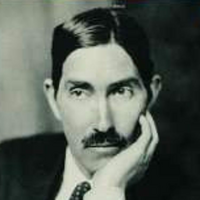
Harold Edward Monro (14 March 1879– 16 March 1932) was an English poet born in Brussels and proprietor of the Poetry Bookshop in London, which helped many poets bring their work before the public. Monro was born at 137 chaussée de Charleroi, Saint-Gilles/St Gillis, Brussels, on 14 March 1879, youngest of three surviving children of Edward William Monro (1848–1889), civil engineer, and his wife and first cousin, Arabel Sophia (1849–1926), daughter of Peter John Margary, also a civil engineer. Monro’s father was born at Marylebone and died aged 41 when Monro was only nine years old. This loss may have influenced his character as a poet.

I'm honestly, not a good poet. In fact, I hate writing poetry because my poetry is the absolutely horrible in my eyes but in others, its good. I post my poetry, not to get positive feedback or useful criticism but I post it to share my feelings and have a sense of release in my life. I bottle a lot of my feelings up and sometimes, I get inspiration to write a poem but even when i write a poem, it doesn't feel right. I like sharing my poetry so people can get an insight of my feelings inside and see the stuff, I've went through or am currently going through. Again I am not looking for criticism or really any praise. If you do like my poetry, well then I'm glad. It's usually a shock to me that anyone would take a liking to my poetry and if you don't like my poetry, well then that's something we can both agree on right? ;) ABOUT ME: I live in Charlotte,NC. I am 18 years old. I've been writing poetry ever since my mom died which was 5 years ago.
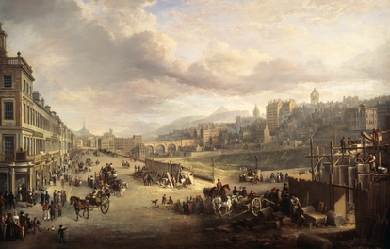
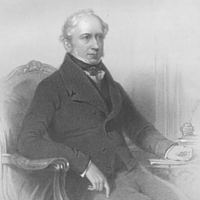
James Montgomery (4 November 1771– 30 April 1854) was a British poet, hymnwriter and editor. He was particularly associated with humanitarian causes such as the campaigns to abolish slavery and to end the exploitation of child chimney sweeps. Montgomery was born at Irvine in Ayrshire in south-west Scotland, the son of a pastor and missionary of the Moravian Brethren.

soy una perosna muy simpatica amante de los animales , la naturaleza y los libros ... mi vida es algo hiperactiva como yo ja ja pero sencilla y comun a la vez. tengo un caracter un algo particular y me gusta la vida en moviemiento ... enamorada eternamente , soy una convencida q sin amor no se puede convatir el mal de la tierra que ultimamente esta arrasando con todo y con todos . me gustaria hacer cosas para salvar al mundo y a la paz mundial y de hecho por ahora estoy participando del grupo de voluntarios de greenpeace en mendoza ya que vivo alli. soy muy feliz con la familia y los amigos que tengo que sin ellos no seria nada . me quedan dos materias y la tesis para recibirme de tecnica en comercio exterior y aduanas y la verdad q estoy muy orgullosa de mi misma y de mis padres obiamente que hicieron un esfuerzo muy grande. me interesa la literatura, ya que puedo despejar la mente y enfocarme en lo difrente y pasional del mundo de la escritura , de hecho escribo en lugares solitarios y con mucho verde a mi alrededor, lo utilizo como una forma de conexion con mi yo interno y con la naturaleza. me considero muy simpatica , algo gruñona , divertida , pasional y extrovertida eso si alejate cuando me enojo , muy insegura , con muchos miedos pero me enfrento a la vida con dignidad y pasión . me muestro dura y fría pero es una forma de protegerme es como un tipo de coraza, soy demasiado extremsita puedo amar y odiar al mismo tiempo o en franjas cortas de segundos . ser tan sincera y frontal a veces juega en contra porque no lo podes dominar y terminaslastimando a ese que tanto amas pero que lo ocultas par que no se de cuenta y no encuentre tu punto debil . soy una amante del teatro ,del arte y la música asiquee se podria decir que mi vida es un escenario , a veces utilizo diferentes personajes porque me cuesta encontrar ese que verdaderamente me caracteriza . pero eso sí me juego al máximo cuando amo de verdad y con el corazón. puedo ser buena per muy mala tambien cuando me tocan a los seres que mas amo en esta tierra mi familia y mis amigos . soy pacifica , algo violenta cuando me sacan de mi .y desde ya muy pero muy amante del amor aunque a veces no me quda otra q ocultarlo como todo en solo escribiendo es cuando no oculto nada de lo que hay en mi corazon , mis sentmientos salen a la luz y es cuando eme puedo mostrar completamente desnuda. espero que despues de eso quieran interiorisarse sobre mis escritos literarios ja ja , ya que creo que los deje un poc perplejos y sin palabras pero esa esla idea atraerlos a travez de la vista y a corazón abierto. mi lema es : La vida es una rueda ... todo pero todo VUELVE...

Juan María Montalvo Fiallos (April 13, 1832 in Ambato – January 17, 1889 in Paris) was an Ecuadorian author and essayist. Biography Born in Ambato to José Marcos Montalvo and Josefa Fiallos, he studied philosophy and law in Quito before returning to his hometown in 1854. He held diplomatic posts in Italy and France from 1857 to 1859. A political liberal, Montalvo’s beliefs were marked by anti-clericalism and a keen hatred for the two caudillos that ruled Ecuador during his life: Gabriel García Moreno and Ignacio de Veintemilla. After an issue of El Cosmopolita viciously attacked Moreno, Montalvo was exiled to Colombia for seven years. Moreno’s assassination was attributed to Montalvo’s writings. He was a dedicated champion of democracy and an enemy of the writer Juan León Mera. In the late seventies Juan Montalvo was twice exiled to France, remaining there from 1879, as punishment for Las catilinarias (1880), the work that made him famous throughout intellectual circles in the United States, Europe and the rest of Latin America. Alongside full-length books, Montalvo was an accomplished essayist, and his Siete Tratados (1882) and Geometría Moral (published in 1902, after his death) were popular in Ecuador and were banned by Veintemilla. He also wrote a witty sequel to Miguel de Cervantes’s Don Quixote, called Capítulos que se le Olvidaron a Cervantes ("Chapters Cervantes Forgot"), published posthumously in 1895. He died of tuberculosis in Paris. His mummified body now rests in a mausoleum in his birthplace of Ambato. Family Juan Montalvo’s father was Marco Montalvo Oviedo of Guano, and his mother was María Josefa Fiallos y Villacreces of Ambato. Montalvo was the youngest of 7 siblings: Francisco, Francisco Javier, Mariano, Alegría, Rosa, Juana and Isabel. Montalvo married María Guzmán Suárez in Ambato on October 17, 1868 and had two children with her. In 1882 he met Augustine Contoux with whom he had one child. Works * Las catilinarias (1880) * Capítulos que se le olvidaron a Cervantes (1868)– Montalvo’s only novel * Libro de las pasiones (published posthumously in 1935) contains the dramas La Leprosa, Jara, Granja, El Descomulgado and El Dictador * Siete Tratados (1882) * Geometría Moral (published posthumously in 1902) * Judas (1872) Literary and political magazines founded by Montalvo * La Razón (1848) * El Veterano (1849) * La Moral evangélica (1854) * El Espectador (1855) * El Cosmopolita (1865) * El Regenerador (1872) References Wikipedia—https://es.wikipedia.org/wiki/Juan_Montalvo
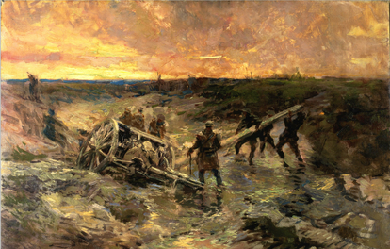
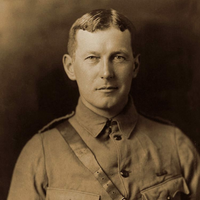
Lieutenant Colonel John McCrae, MD (November 30, 1872– January 28, 1918) was a Canadian poet, physician, author, artist and soldier during World War I, and a surgeon during the Second Battle of Ypres, in Belgium. He is best known for writing the famous war memorial poem “In Flanders Fields”. McCrae died of pneumonia near the end of the war.

I have always preferred to read a book than watch a film. Poetry became something I enjoyed because it doesn't always give up its meaning at first. You have to chew over it and contemplate. Some poetry expands my mind and other poetry breaks my heart. My life so far has been pretty straight forward - I have a lot to be grateful for. I'm mostly a happy person, but like everyone sometimes I get sad, and when I do I write.
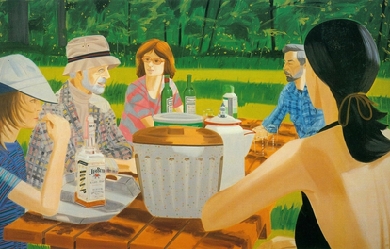
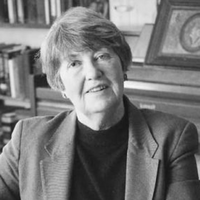
Lisel Mueller was born in Hamburg, Germany, on February 8, 1924 and immigrated to America at the age of 15. She won the U.S. National Book Award in 1981 and the Pulitzer Prize in 1997. Her poems are extremely accessible, yet intricate and layered. While at times whimsical and possessing a sly humor, there is an underlying sadness in much of her work.
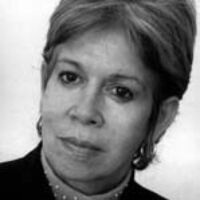
Carmen Matute es una imprescindible poetisa guatemalteca, cuya trayectoria ha sido valorada y recompensada en varias ocasiones, permitiéndole tanto participar de importantes antologías como conquistar prestigiosos certámenes en el plano nacional e internacional. Matute nació en Guatemala en 1944, país en el que ha residido desde siempre. Estudió la licenciatura en Lengua y Literatura Hispanoamericana en la Universidad de San Carlos de Guatemala y desempeña labores de escritora, habiéndose lanzado a esta tarea siendo aún muy joven. Actualmente goza de un especial reconocimiento no sólo en su país sino en otros territorios. Entre sus obras poéticas pueden destacarse "Vida Insobornable", "En el filo del gozo", "Abalorios y Espejismos" y "Ecos de casa vacía"; las mismas han sido traducidas a decenas de idiomas, conquistando a lectores dispersos a lo largo de todo el mundo. De su narrativa mencionaremos su obra más reconocida, "El Cristo del Secuestro". Además, Carmen es redactora de artículos sobre arte y cultura, habiendo colaborado con importantes medios de su país. Su estilo libre y lleno de símbolos cotidianos permite a los lectores acercarse a una poetisa fresca, actual y capaz de transmitir las sensaciones más profundas e inolvidables. Para poder apreciar este rasgo de la lírica de Matute, podemos recomendar la lectura de poemas como "Amado" y "Autorretrato". Refrerencias Poemas del Alma – www.poemas-del-alma.com/carmen-matute.htm
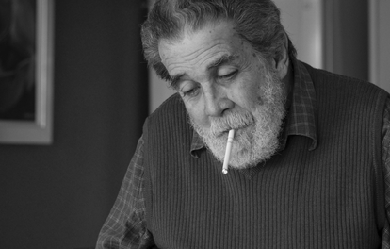
Manuel Díaz Martínez (Santa Clara, 13 de septiembre de 1936 – Las Palmas de Gran Canaria, 17 de junio de 2023) fue un poeta, periodista y diplomático cubano de nacimiento, posteriormente nacionalizado español. Fue miembro correspondiente de la Real Academia Española. Fue diplomático en Bulgaria, investigador del Instituto de Literatura y Lingüística de la Academia de Ciencias de Cuba, redactor-jefe del suplemento cultural Hoy Domingo y de La Gaceta de Cuba. Fue uno de los firmantes en 1991 de la Declaración de los intelectuales cubanos (más conocida como Carta de los diez), una carta abierta a Fidel Castro de diez escritores cubanos en la que le solicitaban la democratización del régimen.

Manuel Ángel Vázquez Medel (Huelva, 1956) es poeta, escritor y catedrático de Literatura en la Universidad de Sevilla. Miembro de la Academia de Buenas Letras de Granada. Ha publicado los libros de poemas Pájaro de la noche y Remota luz , así como el de aforismos El ave de Minerva se eleva en el crepúsculo . Es también autor de más de treinta libros de investigación y doscientos "papers" en Humanidades y Ciencias Sociales. Preside la Comisión Académica del Máster en Escritura Creativa, en el que imparte el taller de "Poesía".
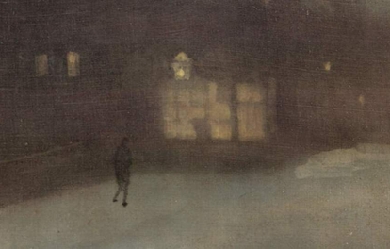
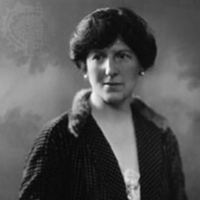
Alice Duer Miller (July 28, 1874– August 22, 1942) was an American writer whose poetry actively influenced political opinion. Her feminist verses impacted on the suffrage issue, while her verse-play The White Cliffs encouraged US entry into World War II. She also wrote novels and screenplays. Biography Alice Duer was born in New York City on July 28, 1874 into a wealthy family. She was the daughter of James Gore King Duer and Elizabeth Wilson Meads, the daughter of Orlando Meads of Albany, New York. Her great grandfather was William Alexander Duer, who was the president of Columbia College, 1829–1842. Her great great grandfather, was William Duer, an American lawyer, developer, and speculator from New York City. He had served in the Continental Congress and the convention that framed the New York Constitution. In 1778, he signed the United States Articles of Confederation. Her great great great grandfather was William Alexander, who claimed the disputed title of Earl of Stirling, and was an American Major-General during the American Revolutionary War. She was also a descendant of Senator Rufus King, who was an American lawyer, politician, and diplomat. He was a delegate for Massachusetts to the Continental Congress. He also attended the Constitutional Convention and was one of the signers of the United States Constitution on September 17, 1787, in Philadelphia, Pennsylvania. He represented New York in the United States Senate, served as Minister to Great Britain, and was the Federalist candidate for both Vice President (1804, 1808) and President of the United States (1816). At the time of her entrance into society, her family lost most of its fortune. She entered Barnard College in 1895 studying mathematics and astronomy. She helped to pay for her studies by selling novels and short essays. She and her sister, Caroline, jointly published a book of poems. Alice graduated in June 1899. On October 5, 1899, she married Henry Wise Miller at Grace Church Chapel in New York City. He was born in 1877, the son of Lt. Commander Jacob Miller, in Nice, France, where his father had been serving with the U.S. Navy. He was an 1892 graduate of Harvard University. They left for Costa Rica, where he attempted to develop rubber cultivation. This venture eventually failed and, in 1903, she, Miller and their young son returned to New York. She became known as a campaigner for women’s suffrage and published a brilliant series of satirical poems in the New York Tribune. These were published subsequently as Are Women People?. These words became a catchphrase of the suffrage movement. She followed this collection with Women Are People! (1917). As a novelist, she scored her first real success with Come Out of the Kitchen in 1916. The story was made into a play and later the 1948 film Spring in Park Lane. She followed it with a series of other short novels, many of which were staged and (increasingly) made into films. At about the same time, her husband began to make money on the Exchange and their money problems were over. Her marriage endured to the end of her life, but was not entirely tranquil. Her novel in verse Forsaking All Others (1933) about a tragic love affair, which many consider her greatest work, reflects this, though it is certainly not autobiographical. In the 1920s and 1930s, many of her stories were used for motion pictures, such as Are Parents People? (1925), Roberta (1935), and Irene (1940), taking her to Hollywood. She also became involved in a number of motion picture screenplays, including Wife vs. Secretary (1936). Her name appears in the very first issue of The New Yorker as an “advisory editor”. In 1940, she wrote the verse novel The White Cliffs, about an American girl who coming to London as a tourist, meets and marries a young upper-class Englishman in the period just before the First World War. The War begins and he goes to the front. He is killed just before the end of the War, leaving her with a young son. Her son is the heir to the family estate. Despite the pull of her own country and the impoverished condition of the estate, she decides to stay and live the traditional life of a member of the English upper class. The story concludes as The Second World War commences and she worries that her son, like his father, will be killed fighting for the country he loves. The poem ends with the lines: ...I am American bred I have seen much to hate here– much to forgive, But in a world in which England is finished and dead, I do not wish to live. The poem was spectacularly successful on both sides of the Atlantic, selling eventually approaching a million copies– an unheard of number for a book of verse. It was broadcast and recorded by British-American actress Lynn Fontanne (with a symphonic accompaniment), and the story was made into the 1944 film The White Cliffs of Dover, starring Irene Dunne. Like her earlier suffrage poems, it had a significant effect on American public opinion and it was one of the influences leading the United States to enter the War. Sir Walter Layton, who held positions in the Ministries of Supply and Munitions during the Second World War, even brought it to the attention of then-Prime Minister Winston Churchill. Death Alice Duer Miller died in 1942, and was interred at Evergreen Cemetery in Morristown, New Jersey.
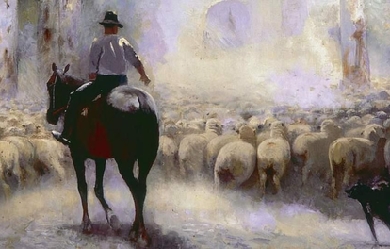
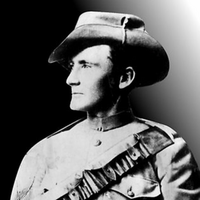
Harry “Breaker” Harbord Morant (9 December 1864– 27 February 1902) was an Anglo-Australian drover, horseman, bush poet, and military officer. While serving with the Bushveldt Carbineers during the Second Anglo-Boer War, Captain Morant was arrested and court-martialed for war crimes– one of the first such prosecutions in British military history. According to military prosecutors, Morant had retaliated for the death in combat of a fellow officer with the summary execution of nine Afrikaner prisoners-of-war. He was found guilty and sentenced to death. Captain Morant was then court-martialed for the murder of a Lutheran minister, Rev. Daniel Heese. The German Heese had witnessed the POW massacre, indignantly vowed to inform Morant’s commanding officer, and had been shot to death on the way to the British Army HQ at Pietersburg. Morant was acquitted of the Heese murder, but his sentence for the killing of the Boers was carried out by a firing squad drawn from the Queen’s Own Cameron Highlanders on 27 February 1902. Despite having left a written confession in his cell, Harry Morant has become a folk hero in modern Australia. His court-martial and death have been the subject of books, a stage play, and an award-winning Australian New Wave film adaptation by director Bruce Beresford. Many now regard Morant as a scapegoat or even as the victim of a judicial murder. Beresford has expressed regret that his film has contributed to this belief: “The film never pretended for a moment that they weren’t guilty. It said they are guilty. But what was interesting about it was that it analysed why men in this situation would behave as they had never behaved before in their lives. It’s the pressures that are put to bear on people in war time... Look at all the things that happen in these countries committed by people who appear to be quite normal. That was what I was interested in examining. I always get amazed when people say to me that this is a film about poor Australians who were framed by the Brits.” Early life It appears that Morant created a number of romantic legends about his past. He was often described as “well-educated” and claimed to have been born in 1865 at Bideford, Devon, England, and to have been the illegitimate son of Admiral Sir George Digby Morant of the Royal Navy; a claim repeated as fact by later writers, although the admiral denied it. It is alleged that Morant entrusted his cigarette case and other personal belongings to Major Bolton, who appeared for the prosecution during his courts-martial with the words “see that my family gets them”. Years later, when Bolton’s daughter allegedly tried to hand them to the family of Sir George, she was told Morant was not related to them. It has been suggested that the young Morant came into the care of a wealthy Scottish author, soldier, hunt-master and golfer, George Whyte-Melville. Like other stories there is no evidence for this theory. The results of enquiries made in 1902 by both The Northern Miner and The Bulletin newspapers identified him as Edwin Henry Murrant who had arrived at Townsville in Queensland on the SS Waroonga in 1883. Murrant was born at Bridgwater in Somerset, England, in December 1864, the son of Edwin Murrant and Catherine (née Riely). Edwin and Catherine were Master and Matron of the Union Workhouse at Bridgewater and after Edwin died in August 1864, four months before the birth of his son, Catherine continued her employment as Matron until her retirement in 1882. She died in 1899 when Morant was in Adelaide, South Australia, preparing to leave for South Africa. Morant settled in outback Queensland, and over the next 15 years, working in Queensland, New South Wales and South Australia, the charismatic roustabout made a name for himself as a hard-drinking, womanising bush poet and gained renown as a fearless and expert horseman. Harry Breaker Morant was one of the few horsemen who managed to ride the notorious buckjumper Dargin’s Grey in a battle that became a roughriding legend. Morant worked in a variety of occupations; he reportedly traded in horses in Charters Towers, then worked for a time on a newspaper at Hughenden in 1884, but there are suggestions that he left both towns as a result of debts. He then drifted around for some time until he found work as a bookkeeper and storeman on the Esmaralda cattle station. On 13 March 1884, Morant married Daisy May O’Dwyer, who later became famous as an anthropologist. The Morants separated soon after and never formally divorced; Daisy reportedly threw him out after he failed to pay for the wedding and then stole some pigs and a saddle. He then worked for several years as an itinerant drover and horse-breaker, as well as writing his popular bush ballads, becoming friendly with famed Australian bush poets Henry Lawson, Banjo Paterson and William Ogilvie. Military career At the time Morant volunteered for military service (in 1899), the formal federation of the Commonwealth of Australia was still two years away. Australia consisted of separate self-governing colonies, each of which was still subject to the British Crown. The population still included many British immigrants, and most Australians still had strong ties to “The Mother Country”. Consequently, thousands of Australian men volunteered to fight for Britain in the Second Boer War, which pitted British colonial forces against the Boer Republics in South Africa. Evidently, seeing this as a chance to return to England and redeem himself in the eyes of the family he had left 16 years before, Morant enlisted with the Second Contingent of the South Australian Mounted Rifles. While in Adelaide, Morant was reportedly invited to visit the summer residence of the South Australian governor, Lord Tennyson. After completing his training, he was appointed lance corporal and his regiment embarked for the Transvaal on 27 February 1900. In many respects, the terrain and climate of South Africa is remarkably similar to that of outback Australia, so Morant was in his element. His superb horsemanship, expert bush skills, and educated manner soon attracted the attention of his superiors. South Australian Colonel Joseph Gordon recommended him as a dispatch rider to Bennet Burleigh, the war correspondent of the London Daily Telegraph; the job reportedly provided the debonair Morant with ample opportunity to visit the nearby hospital and dally with the nurses. The statement of service Morant tendered at his trial is quoted, apparently verbatim, in the book written by his friend and colleague, George Witton. According to that account, Morant was commissioned as a lieutenant in the Bushveldt Carbineers (BVC) on 1 April 1901. Prior to that, he had served in the South Australian Second Contingent for nine months, during which time he was promoted to the rank of sergeant. Subsequently, he returned to Devon, England for a period of time. In March 1900, Morant carried dispatches for the Flying Column to Prieska, under Colonel Lowe, 7th D.G., who was in the general advance to Bloemfontein and took part in the engagements of Karee Siding and Kroonstadt, and other engagements with Lord Roberts until the entry into Pretoria. Morant was at Diamond Hill and was then attached to General French’s staff, Cavalry Brigade, as war correspondent with Bennet Burleigh of the London Daily Telegraph. He accompanied that column through Middelburg and Belfast to the occupation of Barberton. At this point, he took leave and returned to Devon, England for six months. Here he became close friends with Captain Hunt, and the two of them became engaged to a pair of sisters. Hunt, who was still “signed on”, returned to South Africa to take command of a squadron (?) in the Bushveldt Carbineers, whereas Morant (who had intended that his military service come to an end) followed him shortly after not having found the forgiveness he sought in England. Originally returning to take up a commission in Baden Powell’s Transvaal Constabulary, he was convinced by Hunt to instead accept a commission in the BVC. Boer guerrilla campaign, 1901–1902 Following their defeats on the battlefield during 1899–1900, the Boer Commandos embarked on a guerrilla campaign against both British and Commonwealth forces. In response, Lord Kitchener, the British commander in South Africa assembled and deployed a number of irregular regiments to combat Boer commando units and protect British interests in the region. On his return from leave, Morant joined one of these irregular units, the Bushveldt Carbineers, a 320-strong regiment that had been formed in February 1901 under the command of an Australian, Colonel R.W. Lenehan. Following his friend’s lead, Captain Hunt joined the BVC soon after. The regiment, based in Pietersburg, 180 miles (290 km) north of Pretoria, saw action in the Spelonken region of the Northern Transvaal during 1901–1902. The region was remote, wild and dangerous and was also in a heavily malarial area. Because of this, the British had difficulty in finding troops and as a result, many Commonwealth soldiers enlisted. About forty percent of the men in the BVC were Australians, but the regiment also included about forty surrendered Boers ("joiners") who had been recruited from the internment camps, and according to Witton, their presence was greatly resented by the Australians. The garrison was soon divided into two columns; one, under the command of Lieutenant Morant, operated in the Strydpoort district, about 30 miles (48 km) south-east of Pietersburg. BVC A Company moved north under the command of Captain James Huntley Robertson and established a command post at Sweetwaters Farm, about 90 miles (140 km) north of Pietersburg, which they renamed Fort Edward. The other ranking officer at the fort was Captain Alfred Taylor, an Anglo-Irish officer with the Army’s Intelligence Department. He had been selected and sent to Spelonken by Kitchener because of his knowledge of “the natives”. In his book, Witton wrote that as far as the Africans were concerned: On 2 July 1901, Captain Taylor received word that a group of six Boers were coming in to the fort, accompanied by two covered wagons and a large herd of cattle. In response, the Captain sent a runner to summon troops from the Bushveldt Carbineers. Upon their arrival, Cap. Taylor ordered a party under BVC Major K.C.B. Morrison to intercept the six Boers. He instructed him to “make it look like a fight”, ignore a white flag if one was flown, and take no prisoners. After listening, Maj. Morrison turned to Cap. Robertson and asked whether he should obey Taylor’s orders. Robertson replied, “Certainly, he is commanding officer at Spelonken.” In reality, while four of the Boer group were members of the Zoutpansberg Commando, all were unarmed, suffering from malaria, and on the way to the Swiss Mission Hospital at Valdezia. Upon being intercepted by Morrison’s patrol, all six Boers and the two Native African herdsmen accompanying them were shot in the heads and necks and left un-buried. The cash box, gold bars, and cattle they carried were seized by BVC Lt. Peter Handcock and never seen again. The victims’ known names were: Jan F. Vercuil, F.J.G. Potgieter, Jan J. Geyser, P.J. Geyser, J.C. Greyling, and M. van Heerden. Upon their return to Fort Edward, BVC Trooper B.J. van Buuren, an Afrikaner “joiner”, was seen pointing out the members of Maj. Morrison’s patrol to a group of Boer women and children who were being held for transport to the British concentration camp at Pietersburg. Believing that Trooper van Buuren had told the women in Afrikaans of the recent massacre, Capt. Robertson ordered Lt. Handcock to “attend to the matter”. On 4 July 1901, Lt. Handcock led a handpicked patrol of four men, including Trooper van Buuren, from Fort Edward to “investigate Boer activity close by”. In a subsequent deposition, Trooper M.A. Churton described having seen Lt. Handcock ride up behind Trooper van Buuren and shoot him three times in the back. Lt. Handcock then allegedly rode up to Trooper Churton and said, “Keep a sharp lookout. We just lost a man back there.” Meanwhile, news had reached military police in Pietersburg that a Spelonken woman had accused Capt. Robertson of sexual assault. In response, Robertson was recalled to HQ and given a choice between court martial and resigning his commission. He chose the latter option and left the British Armed Forces. Events leading to Morant’s arrest The exact sequence and nature of the events leading up to Morant’s arrest and trial are still disputed, and accounts vary considerably. While it seems clear that some members of the BVC were responsible for shooting Boer POWs and civilian noncombatants, the precise circumstances of these killings and the identities of those responsible will probably never be known for certain. The following account is drawn mainly from the only surviving eyewitness source, and the 1907 book Scapegoats of the Empire by Lieutenant George Witton, one of the three Australians sentenced to death for the alleged murders and the only one to escape execution. With Hunt now commanding the detachment at Fort Edward, discipline was immediately re-imposed by Lieutenant Morant and Lieutenant Handcock, but this was resisted by some. In one incident, several members of a supply convoy led by Lieutenant Picton looted the rum it was carrying, resulting in their arrest for insubordination and for threatening to shoot Picton. They escaped to Pietersburg, but Captain Hunt sent a report to Colonel Lenehan, who had them detained. When the matter was brought before Colonel Hall, the commandant of Pietersburg, he ordered the offenders to be discharged from the regiment and released. In his book, Witton explicitly accused these disaffected troopers of being responsible for “the monstrous and extravagant reports about the BVC which appeared later in the English and colonial press.” Back at Fort Edward, the seized livestock was collected and handed over to the proper authorities and the stills were broken up, but according to Witton, these actions were resented by the perpetrators, and as a result Morant and Handcock were “detested” by certain members of the detachment. Witton arrived at Fort Edward on 3 August with Sergeant Major Hammett and 30 men, and it was at this point that he met Morant and Handcock for the first time. Death of Captain Hunt The pivotal event of the Morant affair took place two days later, on the night of 5 August 1901. Captain Hunt led a 17-man patrol to a Boer farmhouse called Duivelskloof (Devil’s Gorge), about 80 miles (130 km) south of the fort, hoping to capture its owner, the Boer commando leader Veldtcornet Barend Viljoen. Hunt also had some 200 armed native African irregulars with him, and Witton claimed that although “those in authority” denied the use of African auxiliaries, they were in fact widely used and were responsible for “the most hideous atrocities”. Hunt had been told that Viljoen had only 20 men with him. The Boers surprised the British as they approached. During the ensuing skirmish, both Barend Viljoen and his brother Jacob Viljoen were killed. Witnesses later testified that Captain Hunt was wounded in the chest while firing through the windows and Sergeant Frank Eland was killed while trying to recover his body. Witnesses later testified that Hunt was still alive when the British retreated. When news of Hunt’s death reached the fort, it had a profound effect on Morant; Witton said he became “like a man demented”. Morant immediately ordered every available man out on patrol, broke down while addressing the men, and ordered them to avenge the death of their captain and “give no quarter”. Significantly, Morant did not see Hunt’s body himself; according to Witton, Morant arrived about an hour after the burial. He questioned the men about Hunt’s death and, convinced that his friend had been murdered in cold blood, he again vowed to give no quarter and take no prisoners. Witton recounted that Morant then declared that he had, on occasion, ignored Hunt’s order to this effect in the past, but that he would carry it out in the future. Retaliation The following day, after leaving a few men to guard the mission (which the Boers threatened to burn in reprisal for harbouring the British), Morant led his unit back to the Viljoen farm. It had been abandoned, so they tracked the retreating Boers all day, sighting them just on dusk. As the Australians closed in, the hot-headed Morant opened fire too early and they lost the element of surprise, so most of the Boers escaped. They did, however, capture one commando called Visser, wounded in the ankles so that he could not walk. The next morning, as Morant and his men continued their pursuit, a native runner brought a message that the lightly manned Fort Edward was in danger of being attacked by the Boers, so Morant decided to abandon the chase. At this point, he searched and questioned Visser and found items of British uniform, including a pair of trousers which he believed was that of Hunt’s, but was later proved to be of much older origin; he then told Witton and others that he would have Visser shot at the first opportunity. When they stopped to eat around 11 a.m. Morant again told Witton that he intended to have Visser shot, quoting orders “direct from headquarters” and citing Kitchener’s recent alleged “no prisoners” proclamation. He called for a firing party, and although some of the men initially objected, Visser was made to sit down on an embankment (he could not stand), and was shot. After being shot, Visser was still alive, and Morant ordered Picton to administer a coup-de-grace with pistol shots to the head. On the return journey to the fort, Morant’s unit stopped for the night at the store of a British trader, a Mr Hays, who was well known for his hospitality. After they left, Hays was raided by a party of Boers who looted everything he owned. When Morant and his men arrived back at Fort Edward, they learned that a convoy under Lieutenant Neel had arrived from Pietersburg the previous day, just in time to reinforce Captain Taylor against a strong Boer force that attacked the fort. During the encounter, one Carbineer was wounded and several horses were shot and it was at this time that Taylor had a native shot for refusing to give him information about the Boers’ movements. Neel and Picton then returned to Pietersburg. Other killings followed: on 23 August, Morant led a small patrol to intercept a group of eight prisoners from Viljoen’s commandos who were being brought in under guard; Morant ordered them to be taken to the side of the road and summarily shot. The South African born German missionary Reverend Predikant C.H.D. Heese spoke to the prisoners prior to the shooting. About a week later, reports began to circulate that Reverend Heese had been found shot along the Pietersburg road about 15 miles (24 km) from the fort on his way to Pietersburg to report the activities of Morant and his group to the British authorities. At his later court-martial, it was proved that Morant himself had shot Heese in an effort to prevent him from disclosing the murder of the Boer prisoners-of-war. Shortly afterwards, acting on a report that three armed Boer commandos were heading for the fort, Morant took Handcock and several other men to intercept them and after the Boers surrendered with a white flag, they were taken prisoner, disarmed and shot. Later the same day, Major Lenehan arrived at Fort Edward for a rare visit. Morant persuaded Lenehan to let him lead a strong patrol out to search for a small Boer unit led by Field-cornet Kelly, an Irish-Boer commando whose farm was in the district. Kelly had fought against the British in the main actions of the war, and after returning to his home he had become a commando rather than surrender. Morant’s patrol left Fort Edward on 16 September 1901 with orders from Lenehan that Kelly and his men were to be captured and brought back alive if possible. Covering 130 miles (210 km) in a week of hard riding, they left their horses 2 miles (3.2 km) from Kelly’s laager and went the rest of the way on foot. In the early hours of the next morning, Morant’s patrol charged the laager, this time taking the Boers completely by surprise; Morant himself arrested Kelly at gunpoint at the door of his tent. A week later, they returned to Fort Edward with the Kelly party and then escorted them safely to Pietersburg. The British commandant, Colonel Hall, personally sent Morant a message congratulating him on the success of his mission, after which Morant took two weeks leave. Arrests Then, in mid-October, the Spelonken detachment was suddenly recalled to Pietersburg and Fort Edward was abandoned until March 1902. On 24 October 1901, Colonel Hall ordered the arrest of six members of the Carbineers. Four were Australians: Major Lenehan and Lieutenants Handcock, Witton and Hannam; the other two, Captain Taylor and Lieutenant Picton, were English. When Morant returned from leave in Pietersburg, he too was arrested, although no charges were laid at the time. A Court of Enquiry into the affairs of the Bushveldt Carbineers followed. The War Office subsequently stated that, on 8 October 1901, some members of the BVC who had been discharged at Pietersburg on the expiration of their service had reported the irregular actions of the officers at Fort Edward over the preceding months. The men were held in solitary confinement within the garrison, in spite of vigorous protests by Lenehan; he even wrote directly to Kitchener to ask that he be allowed to inform the Australian government of his position, but Kitchener ignored the request. Meanwhile, the Court of Enquiry held daily hearings, taking evidence from witnesses about the conduct of the BVC. Two weeks later, the prisoners were finally informed of the charges against them; in December, they were again brought before the panel and told that they were to be tried by court-martial. The panel found that there were no charges to answer in the cases of Hannam and Sergeant Major Hammett. On hearing of the arrests, Kitchener’s Chief of Police, Provost Marshall Robert Poore, remarked in his diary, “... if they had wanted to shoot Boers they should not have taken them prisoner first”—a view later ruefully echoed in his book by George Witton. While it is certain that Morant and others did kill some prisoners, their real “mistake” in terms of their court-martial was that they killed the Boers after capturing and disarming them after they surrendered with a white flag. As Poore noted in his diary, had they shot them before they surrendered, the repercussions might well have been considerably less serious, since they could have claimed (truthfully or otherwise) that they had been killed in battle, rather than murdered after being taken prisoner. Just before the court-martial, Colonel Hall was removed from his post at Pietersburg and transferred to India. The BVC were disbanded and replaced by a new regiment called the Pietersburg Light Horse. On 15 January 1902, the accused were finally given copies of the charges against them and informed that they would be defended by Major James Francis Thomas (1861–1942), who in civilian life had been a solicitor in Tenterfield, New South Wales.[3][4] The court-martial began the following day. Court-martial The court-martial of Morant and his co-accused began on 16 January 1902 and was conducted in several stages. Two main hearings were conducted at Pietersburg in relatively relaxed conditions; one concerned the shooting of Visser, the other the “Eight Boers” case. A large number of depositions by members of the BVC were made, giving damning evidence against the accused. For example, a Trooper Thompson stated that, on the morning of the 23rd (1901), he saw a party of soldiers with eight Boers: “Morant gave orders, and the prisoners were taken off the road and shot, Handcock killing two with his revolver. Morant later told me that we had to play into his hands, or else they would know what to expect.” A Corporal Sharp said that he "would walk 100 miles barefoot to serve in a firing squad to shoot Morant and Handcock.” Soon after the second hearing, the prisoners were put in irons, taken to Pretoria under heavy guard and tried on the third main count, the killing of Reverend Heese. Although acquitted of killing Reverend Heese, Morant and his co-accused were quickly sentenced to death on the other two charges. Morant and Handcock were shot within days of sentencing, while Witton’s sentence was commuted to life imprisonment by Lord Kitchener. Kitchener personally signed Morant and Handcock’s death warrants. The Field Marshal was absent on tour when the executions took place. Execution During the day of 26 February, Morant and Handcock were visited by a distraught Major Thomas; Witton says that news of the impending execution had “almost driven him crazy”. Thomas then rushed off to find Kitchener and plead with him, but was informed by Colonel Kelly that the Commander-in-Chief was away and was not expected back for several days. Thomas pleaded with Kelly to have the executions stayed for a few days until he could appeal to the King, but was told that the sentences had already been referred to England—and confirmed—and that there was “not the slightest hope” of a reprieve; Morant and Handcock “must pay for what he did”. When asked if he wanted to see a clergyman, Morant replied indignantly, “No! I’m a Pagan!” On hearing this, Handcock asked, “What’s a Pagan?” and after hearing the explanation, declared “I’m a Pagan too!” As the afternoon wore on, all the prisoners could clearly hear the sound of coffins being built in the nearby workshop. At 16:00 hours, Witton was told he would be leaving for England at five the following morning. That night, Morant, Picton, Handcock and Witton had a last supper together; at Morant’s request, he and Handcock were allowed to spend their last night in the same cell. Morant spent most of the night writing and then penned a final sardonic verse, and a confession which read To the Rev. Canon Fisher Pretoria The night before we’re shot We shot the Boers who killed and mutilated our friend (the best mate I had on Earth) Harry Harbord Morant Peter Joseph Handcock At 05:00 hours on 27 February, Witton was taken away and was allowed to say a brief farewell to Morant and Handcock, but was only allowed to see them through the small gate in the cell door and clasped hands. Shortly before 06:00 hours, Morant and Handcock were led out of the fort at Pretoria to be executed by a firing squad from the Queen’s Own Cameron Highlanders. Both men refused to be blindfolded; Morant gave his cigarette case to the squad leader, and his last words were reported as: “Shoot straight, you bastards! Don’t make a mess of it!”. A contemporary report from The Argus on 3 April 1902, however, has his last words as “Take this thing (the blindfold) off”, and on its removal, “Be sure and make a good job of it!”. Witton wrote that he was by then at Pretoria railway station and heard the volley of shots that killed his comrades. However, Poore, who attended the execution, wrote in his diary that he put Witton and Lieutenant Picton on the train that left at 05:30 hours. Thus, Witton would have been several miles on the way to Cape Town when the execution occurred. Aftermath of the execution Due to British military censorship, reports of the trial and execution did not begin to appear in Australia until the end of March 1902. The Australian government and Lieutenant Handcock’s wife, who lived in Bathurst with their three children, only learned of Handcock and Morant’s death from the Australian newspapers weeks after their executions. After learning of his sentence, Lieutenant Witton arranged to send two telegrams, one to the Australian government representative in Pretoria and the other to a relative in Victoria, but despite assurances from the British, neither telegram was ever received. The Australian government demanded an explanation from Kitchener who, on 5 April 1902, sent a telegram to the Australian Governor-General, which was published completely in the Australian press. It reads as follows: “In reply to your telegram, Morant, Handcock and Witton were charged with twenty separate murders, including one of a German missionary who had witnessed other murders. Twelve of these murders were proved. From the evidence it appears that Morant was the originator of these crimes which Handcock carried out in cold-blooded manner. The murders were committed in the wildest parts of the Transvaal, known as Spelonken, about eighty miles north of Pretoria, on four separate dates namely July 2, August 11, August 23, and September 7. In one case, where eight Boer prisoners were murdered, it was alleged to have been done in a spirit of revenge for the ill treatment of one of their officers– Captain Hunt– who was killed in action. No such ill-treatment was proved. The prisoners were convicted after a most exhaustive trial, and were defended by counsel. There were, in my opinion, no extenuating circumstances. Lieutenant Witton was also convicted but I commuted the sentence to penal servitude for life, in consideration of his having been under the influence of Morant and Handcock. The proceedings have been sent home.” News of the executions excited considerable public interest in the UK and a summary of the trial was published in The Times on 18 April 1902, but the British government announced in the House of Commons that, in keeping with normal practice, the court-martial proceedings would not be made public. The official transcripts of the court-martial reportedly disappeared soon afterwards. The Treaty of Vereeniging was signed on 31 May 1902. George Witton was transported to naval detention quarters England and then to Lewes prison in Sussex. Some time later he was transferred to the prison at Portland, Dorset, and was released after serving twenty-eight months. His release was notified to the British House of Commons on 10 August 1904. On his release he returned to Australia and for a while lived in Lancefield, Victoria, where he wrote his controversial book about the Morant case. He published it in 1907 under the provocative title Scapegoats of the Empire. The book was reprinted in 1982 following the success of the 1980 film Breaker Morant. Witton died in Australia in 1942. Alfred Taylor became a Native Commissioner in Rhodesia and a Member of Parliament and died in 1941. Literature on Morant and conflicting theories about the case The story of Morant’s life, exploits, trial and execution have been examined in several books and numerous press and internet articles, but as noted above, each account varies very considerably from the other in both the facts presented and their interpretation. There are facts intermingled with fiction. The most important primary source, the official records of the court-martial, vanished following the trial and their location remains a mystery. A report on the case from Kitchener to the Australian Governor-General (published in the Australian press on 7 April 1902) quotes Kitchener as saying that “the proceedings have been sent home” [i.e. to England]. Whatever their actual fate, the transcripts have not been seen since the trial and evidently not even the Australian government was granted access to them. In the 'Afterword’ to the 1982 reprint of Witton’s book, G.A. Embleton states that “ .. the British authorities have been approached by many researchers eager to examine the transcripts thought to be held by the War Office. Invariably these requests have been met with denials that the documents exist or pronouncements to the effect that they cannot be released until the year 2002... It now appears that the papers never reached England... (it was) recently announced that the court-martial papers had been discovered in South Africa...” A comprehensive record of the trial of Morant and Handcock, complete with a large number of depositions by members of the BVC and other witnesses of the deeds of Morant and Handcock, appears in Arthur Davey’s “Breaker Morant and the Bushveldt Carbineers” (Van Riebeeck Society, Cape Town 1987). In 2012, South African historian Charles Leach published the book The Legend of Breaker Morant is DEAD and BURIED: A South African version of the Bushveldt Carbineers in the Zoutpansberg, May 1901– April 1902. Based upon extensive research, Leach had complete access to unpublished South African sources and the papers of the Viljoen and Heese families. Joe West, a British Bushveldt Carbineers researcher, wrote in response: “Charles Leach’s impressive research has revealed that the crimes of Morant and his associates were worse than originally thought. In today’s day and age Morant and Handcock plus several others would be arraigned before a War Crime Tribunal.” Primary sources In the absence of the original trial records, three primary sources remain. The first is the report of the trial printed in The Times in April 1902; the second is George Witton’s account of the events of 1901–02, contained in his book Scapegoats of the Empire. The third and most recent is a letter about the case, written by Witton to Major Thomas in 1929, which was kept secret at Witton’s request until 1970. In it, Witton suggests that although Handcock broke down and confessed to the crimes, he did so under duress. Other accounts Wilcox states the next important book in creating the Morant myth was Cutlack’s Breaker Morant (1962), a short book as much a cartoon version of reality as The Bulletin once presented. (Wilcox, p. 363.) Cutlack’s story, said Wilcox, was based on Witton’s Scapegoats and Frank Fox’s Breaker Morant. The 1976 book The Australians At The Boer War by Australian writer R.L. Wallace gives a concise and reasonably detailed account of Morant’s military career, trial and execution although it contains almost no information about Morant’s earlier life and omits a number of significant details contained in Witton’s account of the events leading up to Morant’s trial. However, Wallace was writing an overall account of the Australians’ role in South Africa, not the life of Morant, Handcock or Witton. The most widely known book is the best-selling Australian novel The Breaker by Kit Denton, first published in 1973 and inspired by Denton’s meeting and conversation with a Boer War veteran who had known Morant. Wilcox suggested this book is a follow-on from Cutlack’s book and helped establish the myth. (Wilcox, p. 363.) However, Denton claimed that Morant and Handcock were executed in Pietersburg and buried near that spot. This mistake appeared in his book as late as 1981 (7th edition, p. 268), and is a possible reason as to why there is confusion around the location of the execution, i.e. Pretoria or Pietersburg. Kenneth Ross’s 1978 highly successful and widely acclaimed play Breaker Morant: A Play in Two Acts (ISBN 0-7267-0997-2), was adapted by Ross and Bruce Beresford into Beresford’s 1980 film Breaker Morant. The film was nominated for the 1980 Academy Award for the screenplay adapted from another source. In 1988 in the small town of Burra, South Australia, where Bruce Beresford’s film 'Breaker Morant’ was shot, David Jennings organized a 'Retrial of Morant, Handcock and Witton’. The townsfolk staged the retrial and generated the imagination of people from all over the world. Archival material which had been gathering dust in attics flooded in. Although the three Justices of the Peace who presided over the 'Retrial’ found all three not guilty on the balance of probabilities that Kitchener had issued the orders to execute Boers in khaki only a diary extract from a deceased Australian Staff Officer on Kitchener’s staff indicated that he had verbally instructed Captain Hunt and the Bushveldt Carbineers to execute prisoners, especially those wearing khaki. Legacy Although it is generally accepted that Morant and/or others in his regiment were responsible for the deaths of a number of Boer commandos, historical opinion is still divided over the central questions of the case—how many Boers were killed, by whom were they killed, and on whose orders? In his book, Born to Fight, Speed has photos of a number of Canadian Scouts wearing black feathers (pp. 105 & 119.), a symbol that they would shoot any Boer captured under arms. Morant’s supporters, on the other hand, argue that he and Handcock were unfairly singled out for punishment even though many other British soldiers were known to have carried out summary executions of Boer prisoners. In their view, the two Australians were made scapegoats by the British, who were intent on concealing the existence of the “take no prisoners” policy against Boer insurgents—a policy which, they claim, had been promulgated by Kitchener himself. However, Hamish Paterson, a South African military historian and a member of the Military History Society, has pointed out that the Bushveldt Carbineers were a British Imperial unit, not an Australian one: technically, the two “Aussies” were British officers. A 2002 book promoted the “scapegoat” argument. It said that while Morant and the others probably committed some crimes and may well have deserved disciplinary action, there is now persuasive evidence from several sources to show that the Kitchener 'no prisoners’ order did indeed exist, that it was widely known among both the British and Australian troops and was carried out by many disparate units. It also asserted that the court-martial was fundamentally flawed in its procedures. The graves of Morant and Handcock were left unattended for many years, but after the release of Beresford’s film it became a popular place of pilgrimage for Australian tourists. In June 1998 the Australian Government spent $1,500 refurbishing the grave site with a new concrete slab. The marble cross which stood over the grave had been vandalised, as had many other gravestones nearby. A series of monuments now mark the locations of some of the incidents, including that of the night attack, and the site of the mass grave of eight burghers. Petition In 2002, a group of Australians travelled to South Africa and held a service at the Pretoria graveside to commemorate the execution on the morning of the 100th anniversary. The service was also attended by the Australian High Commissioner to South Africa. The group left a new marker on the grave. A petition to pardon Morant and Handcock was sent to Queen Elizabeth II in February 2010. The petition has been severely criticised in South Africa, specifically by descendants of the Viljoen brothers who were killed in the skirmish with Hunt and Eland, and the descendants of the family of Rev. Heese. Hamish Paterson states: "I don’t think they [the Australian supporters of a Morant pardon] have actually considered what Morant was convicted of. Let’s start off with the laws of war. If for example, we have a surrender. You want to surrender and I don’t accept your surrender, so I choose not to accept it, that I’m entitled to do. [...] However, the situation changes dramatically once I accept your surrender, then I must remove you from the battlefield to a POW camp and keep you safe. If, for example, Kitchener said, “take no prisoners,” that was very different from “shoot prisoners!” So Morant and Handcock made two very basic errors: Once you’ve accepted the surrender, you take them to the railway line and get them shipped off to Bermuda, or wherever. At that point, the sensible thing to do was to ship them off to a POW camp. The next error was to shoot these guys in front of a neutral witness, and then you kill the witness. These are a series of terrible errors of judgement. Because they killed a German missionary, the Kaiser (became) involved. [...] Technically, the two “Aussies” were British officers. The problem was you were dealing with an unstable set-up in the BVC . It had just been formed. I don’t see a regular Australian unit behaving that way. I rather suspect why no British guys were shot was that they were either regular army or militia, or yeomanry, all of which are very unlikely to actually shoot prisoners. I think no British were shot because they hadn’t made the mistake of shooting prisoners who’d already surrendered.” Jim Unkles, an Australian lawyer, submitted two petitions, one to Queen Elizabeth II, and the other to the House of Representatives Petitions Committee in October 2009 to review the convictions and sentences of Morant, Handcock and Witton. The petitions were referred to the British Crown by the Australian Attorney General. On Monday, 27 February 2012, in a speech delivered to the House of Representatives on the 110-year anniversary of the sentencing of the three men, Alex Hawke, the Member for Mitchell (NSW), described the case for the pardons as “strong and compelling”. In November 2010 a statement from the Ministry of Defence in the UK said that the appeal had been rejected. “After detailed historical and legal consideration, the Secretary of State has concluded that no new primary evidence has come to light which supports the petition to overturn the original courts-martial verdicts and sentences”, the statement said. The decision was supported by Australian military historian Craig Wilcox and by South African local historian Charles Leach, while Jim Unkles continues to campaign for a judicial inquiry. In October 2011 Robert McClelland claimed on ABC radio that the executed men had no legal representation at the Courts Martial. This is untrue since Major J.F. Thomas represented them. On 12 December 2011 Robert McClelland was replaced as Attorney General with Nicola Roxon. [5] On 9 May 2012, Nicola Roxon indicated that the Australian government would not be pursuing the issue further with the British, on the basis that there was no doubt that the three men had committed the killings for which they were convicted. The Australian government’s position is that pardons are only appropriate where an offender is both “morally and technically innocent” of the offence. Roxon also noted the seriousness of the offences involved, explaining that “I consider that seeking a pardon for these men could be rightly perceived as ‘glossing over’ very grave criminal acts.” [6] McClelland, who claims to have reviewed the case, for which no transcripts exist, has yet to provide reasons for his popular view that the Englishman Morant and Australians Handcock and Witton did not receive a fair trial. References Wikipedia—https://en.wikipedia.org/wiki/Breaker_Morant
Doctor en Economía y profesor de Teoría Económica en la Universidad de Extremadura. Es autor de los libros de poemas Iniciación a perderse, El viaje mínimo de Hernán Medina, Vivir por la peripecia y El año de Platón (Historia secreta de Lisboa). También ha publicado, junto a Federico Combi, el álbum ilustrado En mi planeta no hay piruletas: Dinoversos & Poemasaurios. Colabora en diversas revistas de creación como Palabras malditas, El Descensor, Groenlandia, A contrapalabra o Margen cero.

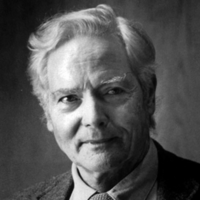
William Stanley Merwin (born September 30, 1927) is an American poet, credited with over fifty books of poetry, translation and prose. During the 1960s anti-war movement, Merwin’s unique craft was thematically characterized by indirect, unpunctuated narration. In the 1980s and 1990s, Merwin’s writing influence derived from his interest in Buddhist philosophy and deep ecology. Residing in Hawaii, he writes prolifically and is dedicated to the restoration of the islands’ rainforests. Merwin has received many honors, including the Pulitzer Prize for Poetry (in both 1971 and 2009), the National Book Award for Poetry (2005) and the Tanning Prize, one of the highest honors bestowed by the Academy of American Poets, as well as the Golden Wreath of the Struga Poetry Evenings. In 2010, the Library of Congress named Merwin the seventeenth United States Poet Laureate to replace the outgoing Kay Ryan. Following his receiving the Pulitzer Prize for Poetry in 2009, Merwin is recognized as one of the principal contributors to poetry in the early 21st century. Early life W. S. Merwin was born in New York City on September 30, 1927. He grew up on the corner of Fourth Street and New York Avenue in Union City, New Jersey until 1936, when his family moved to Scranton, Pennsylvania. As a child, he was enamored of the natural world, sometimes finding himself talking to the large tree in his back yard. He was also fascinated with things that he saw as links to the past, such as the building behind his home that had once been a barn that housed a horse and carriage. At the age of five he started writing hymns for his father, who was a Presbyterian minister. Career After attending Princeton University, Merwin married his first wife, Dorothy Jeanne Ferry, and moved to Spain. During his stay there, while visiting the renowned poet Robert Graves at his homestead on the island of Majorca, he served as tutor to Graves’s son. There, he met Dido Milroy—fifteen years older than he—with whom he collaborated on a play and whom he later married and lived with in London. In 1956, Merwin moved to Boston for a fellowship at the Poets’ Theater. He returned to London where he was friends with Sylvia Plath and Ted Hughes. In 1968, Merwin moved to New York City, separating from his wife who stayed at their home in France. In the late 1970s, Merwin moved to Hawaii and eventually was divorced from Dido Milroy. He married Paula Schwartz in 1983. In 1952 Merwin’s first book of poetry, A Mask for Janus, was published in the Yale Younger Poets Series. W. H. Auden selected the work for that distinction. Later, in 1971 Auden and Merwin would exchange harsh words in the pages of The New York Review of Books. Merwin had published “On Being Awarded the Pulitzer Prize” in the June 3, 1971, issue of The New York Review of Books outlining his objections to the Vietnam War and stating that he was donating his prize money to the draft resistance movement. From 1956 to 1957 Merwin was also playwright-in-residence at the Poet’s Theatre in Cambridge, Massachusetts; he became poetry editor at The Nation in 1962. Besides being a prolific poet (he has published over fifteen volumes of his works), he is also a respected translator of Spanish, French, Latin and Italian poetry (including Dante’s Purgatorio) as well as poetry from Sanskrit, Yiddish, Middle English, Japanese and Quechua. He also served as selector of poems of the late American poet Craig Arnold (1967–2009). Merwin is probably best known for his poetry about the Vietnam War, and can be included among the canon of Vietnam War-era poets which includes such luminaries as Robert Bly, Adrienne Rich; Denise Levertov; Robert Lowell; Allen Ginsberg and Yusef Komunyakaa. In 1998, Merwin wrote Folding Cliffs: A Narrative, an ambitious novel-in-verse about Hawaiʻi in history and legend. Merwin’s early subjects were frequently tied to mythological or legendary themes, while many of his poems featured animals. A volume called The Drunk in the Furnace (1960) marked a change for Merwin, in that he began to write in a much more autobiographical way. The title-poem is about Orpheus, seen as an old drunk. 'Where he gets his spirits / it’s a mystery’, Merwin writes; 'But the stuff keeps him musical’. Another poem of this period—'Odysseus’—reworks the traditional theme in a way that plays off poems by Stevens and Graves on the same topic. In the 1960s, Merwin lived in a small apartment in New York City’s Greenwich Village, and began to experiment boldly with metrical irregularity. His poems became much less tidy and controlled. He played with the forms of indirect narration typical of this period, a self-conscious experimentation explained in an essay called 'On Open Form’ (1969). The Lice (1967) and The Carrier of Ladders (1970) remain his most influential volumes. These poems often used legendary subjects (as in 'The Hydra’ or 'The Judgment of Paris’) to explore highly personal themes. In Merwin’s later volumes—such as The Compass Flower (1977), Opening the Hand (1983), and The Rain in the Trees (1988)—one sees him transforming earlier themes in fresh ways, developing an almost Zen-like indirection. His latest poems are densely imagistic, dream-like, and full of praise for the natural world. He has lived in Hawaii since the 1970s. Migration: New and Selected Poems won the 2005 National Book Award for poetry. A lifelong friend of James Wright, Merwin wrote an elegy to him that appears in the 2008 volume From the Other World: Poems in Memory of James Wright. The Shadow of Sirius, published in 2008 by Copper Canyon Press, was awarded the 2009 Pulitzer Prize for poetry. In June 2010, the Library of Congress named Merwin the seventeenth United States Poet Laureate to replace the outgoing Kay Ryan. He is the subject of the 2014 documentary film Even Though the Whole World Is Burning. Merwin appeared in the PBS documentary “The Buddha,” released in 2010. He had moved to Hawaii to study with the Zen Buddhist master Robert Aitkin in 1976. Personal life Today, Merwin lives on a former pineapple plantation built atop a dormant volcano on the northeast coast of Maui. Awards * Each year links to its corresponding "[year] in poetry" or "[year] in literature" article: * 1952: Yale Younger Poets Prize for A Mask for Janus * 1954: Kenyon Review Fellowship in Poetry * 1956: Rockefeller Fellowship * 1957: National Institute of Arts and Letters grant * 1957: Playwrighting Bursary, Arts Council of Great Britain * 1961: Rabinowitz Foundation Grant * 1962: Bess Hokin Prize, Poetry magazine * 1964/1965: Ford Foundation Grant * 1966: Chapelbrook Foundation Fellowship * 1967: Harriet Monroe Memorial Prize, Poetry magazine * 1969: PEN Translation Prize for Selected Translations 1948-1968 * 1969: Rockefeller Foundation Grant * 1971: Pulitzer Prize for Poetry for The Carrier of Ladders (published in 1971) * 1973: Academy of American Poets Fellowship * 1974: Shelley Memorial Award * 1979: Bollingen Prize for Poetry, Yale University Library * 1987: Governor’s Award for Literature of the state of Hawaii * 1990: Maurice English Poetry Award * 1993: The Tanning Prize for mastery in the art of poetry * 1993: Lenore Marshall Poetry Prize for Travels * 1994: Lila Wallace-Reader’s Digest Writers’ Award * 1998: Ruth Lilly Poetry Prize, awarded by The Poetry Foundation * 1999: Poetry Consultant to the Library of Congress, a jointly-held position with Rita Dove and Louise Glück * 2005: National Book Award for Poetry for Migration: New and Selected Poems * 2004: Golden Wreath Award of the Struga Poetry Evenings Festival in Macedonia * 2004: Lannan Lifetime Achievement Award * 2008: Golden Plate Award, American Academy of Achievement * 2009: Pulitzer Prize for Poetry for The Shadow of Sirius (published in 2008) * 2010: Kenyon Review Award for Literary Achievement * 2010: United States Poet Laureate * 2013: The Zbigniew Herbert International Literary Award Other accolades * Merwin’s former home town of Union City, New Jersey honored him in 2006 by renaming a local street near his former home W.S. Merwin Way. Bibliography * * Each year links to its corresponding "[year] in poetry" or "[year] in literature" article: Poetry - collections * * 1952: A Mask for Janus, New Haven, Connecticut: Yale University Press; awarded the Yale Younger Poets Prize, 1952 (reprinted as part of The First Four Books of Poems, 1975) * 1954: The Dancing Bears, New Haven, Connecticut: Yale University Press (reprinted as part of The First Four Books of Poems, 1975) * 1956: Green with Beasts, New York: Knopf (reprinted as part of The First Four Books of Poems, 1975) * 1960: The Drunk in the Furnace, New York: Macmillan (reprinted as part of The First Four Books of Poems, 1975) * 1963: The Moving Target, New York: Atheneum * 1966: Collected Poems, New York: Atheneum * 1967: The Lice, New York: Atheneum * 1969: Animae, San Francisco: Kayak * 1970: The Carrier of Ladders, New York: Atheneum;—winner of the Pulitzer Prize * 1970: Signs, illustrated by A. D. Moore; Iowa City, Iowa: Stone Wall Press * 1973: Writings to an Unfinished Accompaniment, New York: Atheneum * 1975: The First Four Books of Poems, containing A Mask for Janus, The Dancing Bears, Green with Beasts, and The Drunk in the Furnace, New York: Atheneum; (reprinted in 2000, Port Townsend, Washington: Copper Canyon Press) * 1977: The Compass Flower, New York: Atheneum * 1978: Feathers From the Hill, Iowa City, Iowa: Windhover * 1982: Finding the Islands, San Francisco: North Point Press * 1983: Opening the Hand, New York: Atheneum * 1988: The Rain in the Trees, New York: Knopf * 1988: Selected Poems, New York: Atheneum * 1993: The Second Four Books of Poems, Port Townsend, Washington: Copper Canyon Press * 1993: Travels: Poems, New York: Knopf winner of the 1993 Lenore Marshall Poetry Prize * 1996: The Vixen: Poems, New York: Knopf * 1997: Flower and Hand: Poems, 1977-1983 Port Townsend, Washington: Copper Canyon Press * 1998: The Folding Cliffs: A Narrative, a “novel-in-verse” New York: Knopf * 1999: The River Sound: Poems, New York: Knopf * 2001: The Pupil, New York: Knopf * 2005: Migration: New and Selected Poems, Port Townsend, Washington: Copper Canyon Press—winner of the National Book Award for Poetry * 2005: Present Company, Port Townsend, Washington: Copper Canyon Press * 2008: The Shadow of Sirius, Port Townsend, Washington: Copper Canyon Press—winner of the Pulitzer Prize * 2013: The Collected Poems of W. S. Merwin, New York: Library of America * 2014: The Moon Before Morning, Port Townsend, Washington: Copper Canyon Press Poems * Prose * * 1970: The Miner’s Pale Children, New York: Atheneum (reprinted in 1994, New York: Holt) * 1977: Houses and Travellers, New York: Atheneum (reprinted in 1994, New York: Holt) * Regions of Memory * 1982: Unframed Originals: Recollections * 1992: The Lost Uplands: Stories of Southwest France, New York: Knopf * 2002: The Mays of Ventadorn, National Geographic Directions Series; Washington: National Geographic * 2004: The Ends of the Earth, essays, Washington: Shoemaker & Hoard * 2005: Summer Doorways: A Memoir * 2007: The Book of Fables, Port Townsend, Washington: Copper Canyon Press Plays * * 1956: Darkling Child (with Dido Milroy), produced this year * 1957: Favor Island, produced this year at Poets’ Theatre in Cambridge, Massachusetts (broadcast in 1958 by Third Programme, British Broadcasting Corporation) * 1961: The Gilded West, produced this year at Belgrade Theatre, Coventry, England Translations * * 1959: The Poem of the Cid, London: Dent (American edition, 1962, New York: New American Library) * 1960: The Satires of Persius, Bloomington, Indiana: Indiana University Press * 1961: Some Spanish Ballads, London: Abelard (American edition: Spanish Ballads, 1961, New York: Doubleday Anchor) * 1962: The Life of Lazarillo de Tormes: His Fortunes and Adversities, a Spanish novella; New York: Doubleday Anchor * 1963: The Song of Roland * 1969: Selected Translations, 1948 - 1968, New York: Atheneum; winner of the PEN Translation Prize * 1969: Twenty Love Poems and a Song of Despair, poems by Pablo Neruda; London: Jonathan Cape (reprinted in 2004 with an introduction by Christina Garcia, New York: Penguin Books) * 1969: Products of the Perfected Civilization, Selected Writings of Chamfort, also author of the introduction; New York: Macmillan * 1969: Voices: Selected Writings of Antonio Porchia, Chicago: Follett (reprinted in 1988 and 2003, Port Townsend, Washington: Copper Canyon Press) * 1969: Transparence of the World, poems by Jean Follain, New York: Atheneum (reprinted in 2003, Port Townsend, Washington: Copper Canyon Press) * 1971: “Eight Quechua Poems”, The Hudson Review * 1973: Asian Figures, New York: Atheneum * 1974: Osip Mandelstam: Selected Poems (with Clarence Brown), New York: Oxford University Press (reprinted in 2004 as The Selected Poems of Osip Mandelstam, New York: New York Review of Books) * 1977: Sanskrit Love Poetry (with J. Moussaieff Masson), New York: Columbia University Press (published in 1981 as Peacock’s Egg: Love Poems from Ancient India, San Francisco: North Point Press) * 1977: Vertical Poetry, poems by Roberto Juarroz; San Francisco: Kayak (reprinted in 1988; San Francisco: North Point Press) * 1978: Euripides’ Iphigeneia at Aulis (with George E. Dimock, Jr.), New York: Oxford University Press * 1979: Selected Translations, 1968-1978, New York: Atheneum * 1981: Robert the Devil, an anonymous French play; with an introduction by the translator; Iowa City, Iowa: Windhover * 1985: Four French Plays, including Robert the Devil; The Rival of His Master and Turcaret by Alain-René Lesage; and The False Confessions by Pierre de Marivaux; New York: Atheneum * 1985: From the Spanish Morning, consisting of Spanash Ballads by Lope de Rueda and Eufemia: The Life of Lazarillo de Torres (originally translated in Tulane Drama Review, December 1958); New York: Atheneum * 1989: Sun at Midnight, poems by Musō Soseki (with Soiku Shigematsu) * 1996: Pieces of Shadow: Selected Poems of Jaime Sabines * 1998: East Window: The Asian Translations, translated poems from earlier collections, Port Townsend, Washington: Copper Canyon Press * 2000: Purgatorio from The Divine Comedy of Dante; New York: Knopf * 2005: Gawain and the Green Knight, a New Verse Translation, New York: Knopf * 2013: Selected Translations, translated poems from 1948 - 2010, Port Townsend, Washington: Copper Canyon Press * 2013: Collected Haiku of Yosa Buson, Port Townsend, Washington: Copper Canyon Press (with Takako Lento) * 2013: Sun At Midnight, poems by Muso Soseki, Port Townsend, Washington: Copper Canyon Press (with Soiku Shigematsu) (updated and reissued) Editor * * 1961: West Wind: Supplement of American Poetry, London: Poetry Book Society * 1996: Lament for the Makers: A Memorial Anthology (compiler), Washington: Counterpoint Other sources * * The Union City Reporter March 12, 2006. Archives * * Merwin’s literary papers are held at The Rare Book & Manuscript Library (University of Illinois at Urbana-Champaign). The collection, which is open to researchers, consists of some 5,500 archival items and 450 printed books. References Wikipedia—https://en.wikipedia.org/wiki/W._S._Merwin
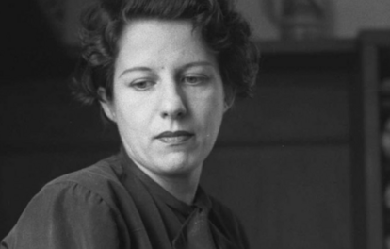
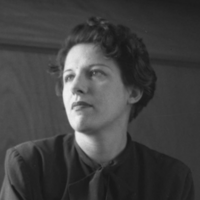
Margarita Michelena (Pachuca de Soto, Hidalgo, 21 de julio de 1917 - Ciudad de México, 27 de marzo de 1998) fue una poeta, crítica literaria, periodista y traductora mexicana. Fue fundadora del diario "El Cotidiano"; directora de "El Libro y el Pueblo", "Respuesta", "La Cultura en México" y "Cuestión" y editora de "Novedades y Excélsior". También trabajó como guionista para la XEW y como conductora en XEMX Radio Femenina. Se distinguió por una fina sensibilidad y pureza lírica de bien dibujados símbolos poéticos. Figura en antologías de poesía mexicana e hispanoamericana editadas en México, España y Argentina.
I used to keep my feelings bottled up until I started to write You shouldn't feel alone when you're always around people right? But I always do and I really don't know why Letting it out in poems feels better than to cry One day I was in my room and I knew no one would understand me So I grabbed a pen and paper and I felt free I started to jot down what I was feeling All the pain started healing


